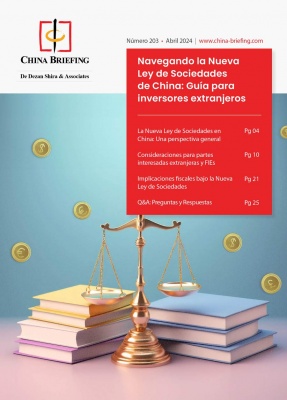RMB Depreciates Against U.S. Dollar By Record Amount in May
By Sofia Liska
Jun. 8 – China’s renminbi (RMB) dropped 0.9 percent against the U.S. dollar in May, more than in any other month since the Chinese government first started letting the RMB appreciate in 2005. A weaker RMB makes Chinese exports more appealing to those importing Chinese goods, but raises the price of foreign products imported by China.
Although the U.S. government under President Barack Obama has pressured China over the past three years to allow the RMB to appreciate faster, China’s central bank weakened the value of its currency at the start of every day last month, signifying slower growth within their domestic economy and a continued need to maintain a strong export focus. As of last year, the U.S. trade deficit with China stood at US$295.46 billion – a number that will not likely decrease if the RMB continues to depreciate.
Mitt Romney, the Republican candidate in this year’s upcoming U.S. presidential elections, claims he will stand up to China and demand that they let market forces dictate the exchange rate. For its part, China is generally unhappy about U.S. allegations that it is a currency manipulator.
According to some bankers and economists, it’s possible that foreign investors and Chinese citizens have in fact been taking their money out of China, thereby contributing to the fall of the RMB. The current instability of the European and Chinese economies is prompting investors to be more cautious with their money, spurring a depreciation of currencies in many emerging markets.
However, with over US$3.3 trillion in foreign exchange reserves and a strong political hand in their economy, it’s more likely that the recent depreciation of the RMB occurred specifically to strengthen exports.
“During a difficult period of slowing growth and weak export demand, the government is taking the opportunity afforded by an apparent net outflow of capital to guide the value of the renminbi lower against the dollar to help support exports,” Eswar S. Prasad, a former China division chief at the International Monetary Fund.
After years of double-digit growth, the Chinese economy has begun to slow down to a more moderate rate. The real estate bubble is deflating, foreign investment is decreasing, retail sales are weak, and this past spring saw the slowest fixed-asset investment in a decade.
Strengthening the export economy would create much needed jobs in China, but would hurt the economies of the other emerging markets supplying the same goods – shoes, garments, electronics, and auto parts.
China is also beginning to export more high-technology products, such as telecommunications equipment, solar panels, and wind turbines, which are usually made in the United States, Europe, and Japan. China’s low costs are also hurting the manufacturing businesses in these countries.
China’s other motive for encouraging the RMB’s depreciation is that since it is linked to the U.S. dollar and the U.S. dollar is currently strong next to the euro, China’s exports to Europe are hurting. China exports more to Europe than to the United States, and therefore must lower the value of the RMB in order for Europe to continue purchasing its products. To further that point, despite the RMB’s steep decline against the U.S. dollar in May, it still rose 5.5 percent against the euro.
Meanwhile, some of China’s key economists argue that the RMB ought to depreciate further. Chief Economist of the Industrial Bank in Fuzhou Lu Zhengwei, for example, supports the depreciation of the RMB.
“I personally think the renminbi will be more or less stable this year, but ideally, it should depreciate by at least 3 percent to 5 percent,” he told the New York Times in an interview last Friday.
However, more mainstream Chinese economists argue that a weakened national currency will keep prices of imported goods too high and keep China’s economy overly dependent on exports.
Related Reading
People’s Bank of China Loosens RMB Trading Band
China Expands QFII Schemes to Allow Greater Foreign Investment
China Takes Further Steps Towards Internationalizing the Renminbi
China Allows Companies to Settle Trade in RMB
China-Australia Agree on Bilateral Currency Swap Agreement
- Previous Article China Releases 12th Five-Year Plan for Trade in Electromechanical and High-Tech Products
- Next Article China Releases Access Requirements for Wine Industry
























